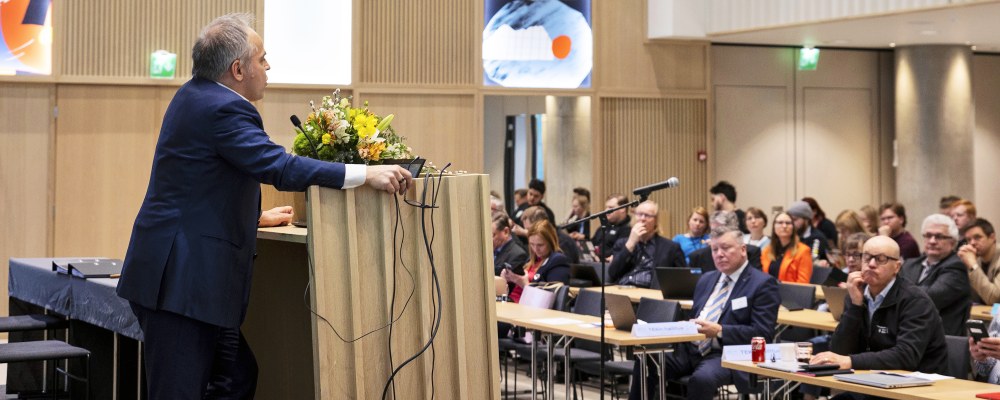
The Finnish economy is not doing well and things may be getting worse before summer. The purchasing power of salaries has fallen dramatically, exports are flagging and unemployment is not far below the peak it reached during the pandemic. Not even highly educated professionals in technology are safe from all this.
Akava’s Chief Economist Pasi Sorjonen delivered a dire speech at TEK’s Council Arena in Helsinki near the end of March.
Sorjonen identified several reasons for the bleak situation.
First of all, global trade is struggling and international demand is weak.
“Trade in goods in the developed countries has declined and these are precisely the countries where we export our products.”
Finnish industrial companies continued to receive fewer new orders in January than the year before, and all the major branches are facing similar problems.
The sharp rise in prices last year and the year before has eroded more than a decade of growth in real income. The lack of household purchasing power is taking a heavy toll on the construction industry right now.
“February was absolutely awful in the housing market. It was even worse than that worst month during the COVID crisis.”
The situation has not been this bad since the financial crisis of 2008.
What’s more, unemployment rates are now going up, with unemployment rising particularly rapidly among university graduates.
“At this rate, within two months the unemployment rate of university graduates will exceed the peak reached during the pandemic,” said Sorjonen.
The rise of unemployment has been relatively slower at other levels of education.
Sorjonen explained that this is because blue-collar work will continue for as long as it is available, but the planning work typically performed by university-educated professionals will end sooner than blue-collar work. The demand for planning work will also start to rise later than the demand for blue-collar work.
We may have to wait for quite some time before the demand for planning work rises, because the Finnish economy has been mired in a slump since the end of last year and may continue to do so.
However, Sorjonen pointed out that economic forecasts do show some signs of improvement towards the end of 2024. The pace of falling orders in industry also seems to have slowed down.
“I do not expect growth to pick up until near the end of the year.”
Sorjonen moderated this comment by saying that economists tend to believe that things will always be better six months from now.
But before then, we will have to endure all kinds of economic pain and the worst will not be over any time soon.
“Patience is the most important medicine”
Taking the stage after Pasi Sorjonen was Director Mika Maliranta from the Labour Institute for Economic Research LABORE who had been assigned the role of a problem-solver in the programme. Maliranta was there to talk about where Finland might find growth.
“I want to keep our expectations in check so as not to cause disappointment. I cannot promise that the next ten years will definitely be better than the last ten years,” Maliranta said to start the presentation.
“The short-term outlook looks worse than I anticipated last autumn. The recession will be longer and deeper.”
According to Maliranta, Finland would be doing better than it is now if the country had not fallen behind comparative countries, such as Denmark and Sweden, after the financial crisis.
“The roots of the problem lie in the development of the productivity of work in the business sector. Finland was doing well until the year 2010 when productivity growth remained at zero.”
The reason for this was that many jobs that create added value were lost in Finland when the success story of Nokia and its subcontractors came to an end. Forestry companies also shut down a number of paper mills for good.
“We now need more high-productivity jobs. Jobs alone are not enough.”
In terms of the ongoing recession and the near future, the problem is that high-productivity jobs do not emerge and cannot be created fast.
According to Maliranta, productivity building involves three phases, each of which lasts for years.
First, you need to focus on research and development for three to five years. Then, another three to five years go to testing and implementation.
Scaling the business usually takes anywhere between five to fifteen additional years.
“Patience is the most important medicine,” says Maliranta.
Maliranta is already seeing some positive signs in companies.
“Young SMEs have more research staff than ever before.”
We just need to get the bigger companies on board as well.